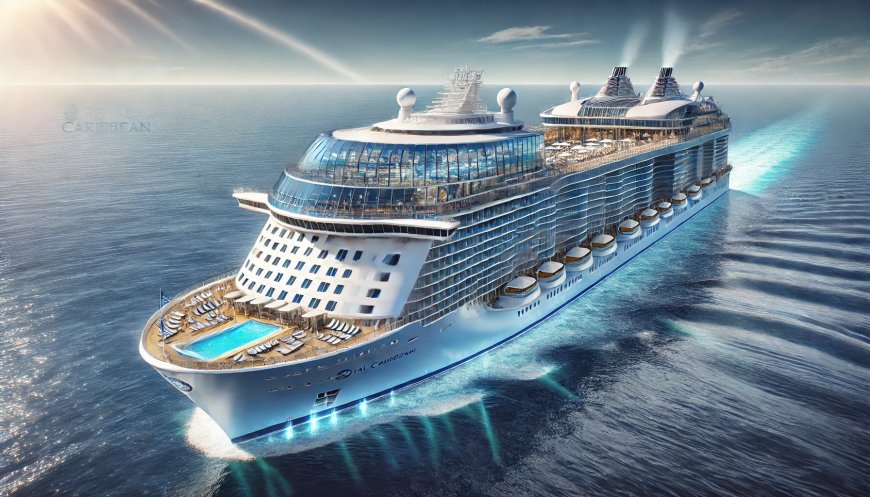Cruising in 2025: Navigating the New Wave of Innovations in the Cruise Industry
Explore the future of cruising in 2025, where innovation meets luxury in eco-friendly, technologically advanced cruise ships. Discover new destinations, enhanced guest services, and a commitment to sustainable travel in this detailed overview of upcoming trends in the cruise industry.

Table of Contents
- Introduction.
- Redefining Experiences: Luxury and Sustainability at the Helm
- Technological Tide: Smart Ships and Enhanced Connectivity.
- Health and Safety: Innovations Inspired by Recent Challenges.
- New Destinations and Itineraries: Beyond the Beaten Path.
- Onboard Amenities: A Focus on Wellness and Personalization.
- Community and Connectivity: Creating a Social Experience.
- Emerging Markets and Economic Impact.
- Regulatory Changes and Safety Protocols.
- Future Outlook: Towards 2030 and Beyond.
- Conclusion.
-
Introduction.
The year 2025 marks a significant turning point for the cruise industry, which has adeptly navigated the rough waters of global disruptions to reemerge as a beacon of innovation and resilience. Today’s cruise ships are marvels of modern technology and sustainability, designed to deliver unparalleled experiences while prioritizing environmental stewardship and passenger safety.
-
Redefining Experiences: Luxury and Sustainability at the Helm
Luxury in the cruising world has been reimagined to encompass not just the highest standards of comfort and service but also a profound commitment to sustainable practices. Major players like Royal Caribbean and Norwegian Cruise Line are pioneering this shift with state-of-the-art vessels powered by alternative fuels such as liquefied natural gas (LNG) which significantly reduce greenhouse gas emissions. These ships also feature solar panels and energy-efficient systems that minimize electricity use.
The onboard experience has been enhanced to connect passengers with the natural world through eco-conscious excursions and sustainability workshops that promote wildlife conservation and environmental awareness. Cruise lines are collaborating with local communities to ensure that tourism supports rather than exploits, aiming to preserve the cultural and natural integrity of each destination.
-
Technological Tide: Smart Ships and Enhanced Connectivity.
The integration of technology on cruise ships in 2025 is transforming passenger experiences. These smart ships are equipped with the latest in digital navigation and safety systems, making sea travel safer and more efficient. Artificial intelligence plays a crucial role in personalizing the customer experience, from personalized greeting systems in cabins to AI-assisted concierge services that anticipate the needs and preferences of passengers.
Connectivity at sea has reached new heights, with onboard Wi-Fi speeds rivaling those on land. This enables passengers to stay connected with friends and family, or even meet work commitments while enjoying the serene ocean backdrop. Interactive apps provide real-time information on onboard activities, port calls, and real-world events, ensuring passengers have everything they need at their fingertips.
-
Health and Safety: Innovations Inspired by Recent Challenges.
Reflecting on recent global health crises, the cruise industry has taken decisive steps to bolster medical capabilities aboard ships. Enhanced medical centers equipped with the latest in medical technology and staffed by skilled healthcare professionals are now standard. Innovations such as in-room health monitoring systems that can detect and respond to passenger health issues before they escalate are being piloted.
Furthermore, cleanliness and hygiene have seen technological upgrades with the use of robotics and automated systems designed to sanitize rooms and public areas efficiently, ensuring a germ-free environment.
-
New Destinations and Itineraries: Beyond the Beaten Path.
The exploration of new destinations is a thrilling development in 2025’s cruise industry. Lines are now offering itineraries that include remote and previously inaccessible areas, facilitated by smaller, more agile ships that can navigate narrower waterways and shallower ports. This not only opens up a plethora of new destinations but also reduces the environmental impact associated with large ships docking at popular ports.
Excursions are more immersive and culturally enriching, offering passengers not just sightseeing but meaningful interactions with local histories and communities. Cruise lines are increasingly involving local guides and experts to lead tours, which supports local economies and provides an authentic experience for travelers.
-
Onboard Amenities: A Focus on Wellness and Personalization.
Wellness has taken center stage, with facilities and programs designed to promote holistic well-being. Onboard amenities now include wellness retreats, yoga studios, and even meditation rooms that offer stunning sea views. Dietary preferences are catered to with a wide range of options available, from vegan and gluten-free to keto and paleo.
Personalization extends through every aspect of the cruise experience. Passengers can customize their daily schedules, meal plans, and even their entertainment options, with onboard systems learning their preferences and adjusting suggestions accordingly.
-
Emerging Markets and Economic Impact.
As cruising continues to evolve, the industry is making significant inroads into emerging markets, particularly in Asia and Africa, where burgeoning middle classes are eager to experience luxury travel. These new markets are not only expanding the demographic reach of cruise lines but are also contributing significantly to local and global economies through increased spending and employment.
-
Regulatory Changes and Safety Protocols.
In response to past industry challenges, regulatory bodies have implemented stricter safety protocols and environmental regulations. These changes have spurred innovations in ship design and operations, ensuring that cruises not only offer relaxation and entertainment but also adhere to the highest safety standards.
-
Future Outlook: Towards 2030 and Beyond.
-
Conclusion.
Cruising in 2025 represents a sophisticated blend of adventure, luxury, and conscientious travel. With each cruise, passengers are not just passengers but active participants in a sustainable travel culture that respects and celebrates the diversity of the world’s landscapes and cultures. As the industry continues to evolve, it promises to offer even more exciting, enriching, and responsible ways to explore the globe.
By continually adapting and innovating, the cruise industry is poised to remain at the forefront of the global tourism sector, offering passengers not just a journey but a transformational experience.

 GloVacations
GloVacations 





